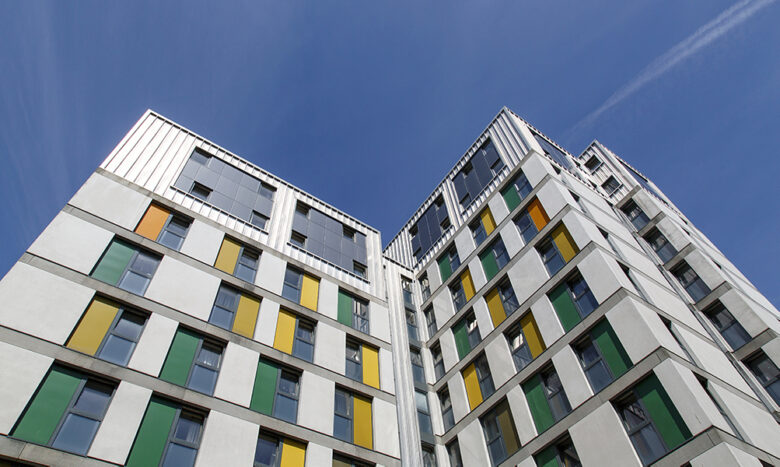
What to Do if My Lender Asks for an EWS1 Form?
Introduced in December 2019 in response to concerns about the safety of some external cladding systems, the EWS1 form is a way to confirm to valuers and lenders that any exterior cladding has been assessed by an expert and has shown to meet fire risk standards. However, changes to the buildings an EWS1 form applies to, and difficulties and expense in obtaining the form have led to delays and confusion for some leaseholders.
With this in mind, it’s easy to see why a request for an EWS1 form could cause concern for those wanting to sell or remortgage. But understanding the guidance around the forms, the process involved, and the support available could help things run much more smoothly.
What is an EWS1 form?
EWS stands for external wall system. The EWS makes up the outside wall of a residential building and includes cladding, insulation and fire break systems. The EWS1 form is designed to consistently record what assessments have been carried out on the external wall construction, enabling building owners to confirm that it has been assessed for safety by a qualified professional.
It is relevant to you if you’re a leaseholder or in shared ownership, although it should be noted that it is not a legal requirement, even though the forms are frequently being imposed as a condition on mortgage applicants by lenders.
Each EWS1 form is valid for an entire block or building for five years, so if you’re considering buying, selling, mortgaging or remortgaging your property, the first step is to contact your freeholder to find out if a form has already been completed or requested.
Which buildings require an EWS1 form?
The EWS1 form is used for residential properties such as blocks of flats, both privately owned and those owned by housing associations or social housing providers, student accommodation, dormitories, assisted living, care homes and houses in multiple occupation.
Initially, the form was only intended to apply to buildings over 18m; however, it was amended in January 2020 following government guidance which stated that the need to assess the risk of external fire spread applied to buildings of any height. Although this was only meant to be the case if there were specific concerns regarding any external wall systems, it led to lenders requesting forms for lower-level buildings unnecessarily, causing more delays and confusion.
In November 2020, the government confirmed that owners of flats in buildings without cladding would no longer need an EWS1 form to sell or remortgage their property.
If in doubt, RICS has produced guidance to help valuers decide when an EWS1 form should be required.
What is the process for obtaining an EWS1 form?
The EWS1 process is for building owners to undertake as the form relates to an entire building, not an individual flat. Buyers and sellers should contact the building owner or the managing agent to encourage this to take place as soon as possible after the lender requests it.
The building owner or agent must confirm the materials used on their building, what the wall system is made up of and whether an assessment is required. Assessments must be carried out by a qualified member of the Chartered Institute of Building, Institute of Fire Safety Managers, Royal Institution of Chartered Surveyors or Society of Façade Engineers.
There are two possible outcomes from an assessment; exterior wall materials are unlikely to support combustion, or combustible materials are present. In the second option, the form will either state that the risk of fire is low enough that no remedial works are required or that the fire risk is high enough that such works are needed.
How much does an EWS1 form cost, and how long does the process take?
Costs can vary significantly based on building size and location but expect it to be in the range of £3,000-£50,000. As the form is not a legal requirement, building owners have no obligation to meet this cost. Depending on the terms of a lease, leaseholders could be expected to contribute to both the assessment costs and remedial works. When it comes to social housing, some providers are charging a fee to access EWS1 forms. Also, be aware that there is currently a backlog of EWS1 assessments due to a lack of qualified assessors, with reports of waits of more than 36 months.
What to do if you’re incorrectly asked for an EWS1 form?
As the government has provided more clarity, it seems the occurrences of lenders requiring EWS1 forms when they are not strictly necessary is declining. If, however, you are asked to provide one, and your building is outside the scope of the EWS1 form, ask your lender to confirm why they have asked for it as they must have a clear rationale for making the request.
Also, refer to the RICS guidance mentioned above and look out for the consumer guidance the association is due to produce shortly.
What if my building owner refuses to undertake the assessment?
Unfortunately, there are many examples of owners and agents being very slow to respond to queries or simply being unable to find a professional to carry out the assessment, creating a situation where leaseholders cannot sell or remortgage.
Official advice on what to do in this situation is scarce and, under current rules, leaseholders have no right to force the building owner to get an EWS1. Those who have been in similar situations recommend speaking to the local council and setting up a leaseholders’ association to work together to ensure the building is safe and mortgages can be approved. The issue should also be referred to the Fire and Rescue Service if fire safety is a concern.
If this doesn’t work, taking legal advice may help to clarify your options. Free services such as the Leasehold Advisory Service can be a good first step. Also, remind the owner or agent that they have a legal obligation to ensure the building is safe and request evidence to prove this.
Can I get a mortgage without an EWS1 form?
Unfortunately, if you live in, or are trying to buy, a property that requires an EWS1 form, many lenders will not offer a mortgage or remortgage without the form. Similarly, if an assessor deems that a building doesn’t meet an adequate fire safety standard and that remedial work is required. In that case, lenders are again unlikely to approve a mortgage until that work is completed.
The EWS1 form has been a cause of concern and frustration for many leaseholders. Further government guidance is expected in the coming year, and funding has been announced for more assessors to help to reduce the backlog, so the hope is the situation will begin to improve. In the meantime, if you’re asked for a form, don’t panic. Keep yourself informed of developments and keep lines of communication open with building owners and lenders to give yourself the best chance of a positive outcome.

